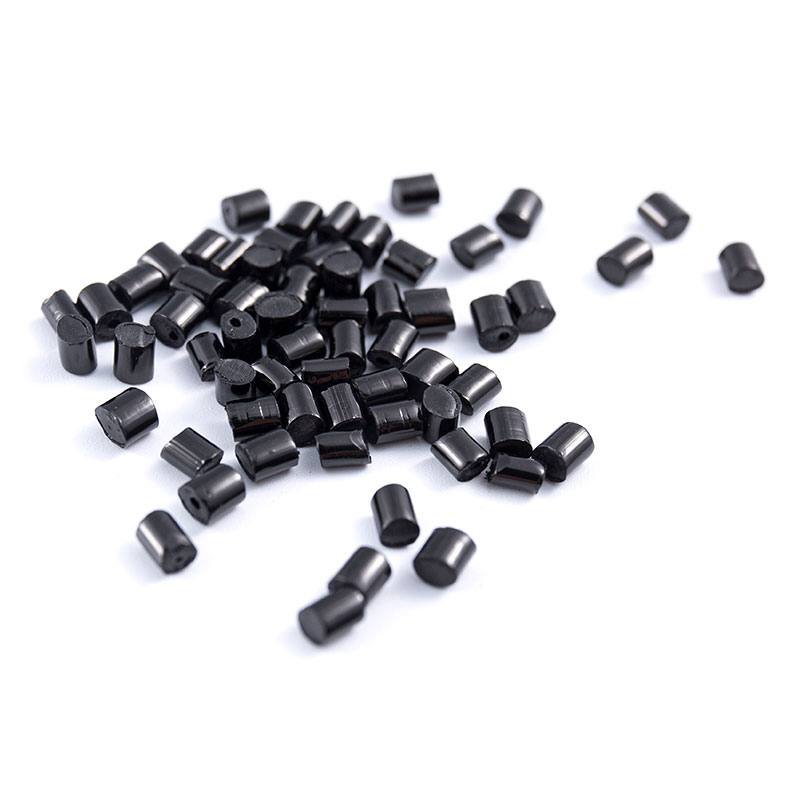How Automotive Interior Modification Black Masterbatch Enhances Material Performance
Automotive interior components face a constant need for improved aesthetics, functionality, and durability.
Automotive Interior Modification Black Masterbatch provides a key solution by enhancing the mechanical properties, color consistency, and UV protection of materials used in vehicle interiors. This masterbatch is a concentrated blend of carbon black and polymer carriers, designed to be incorporated into base polymers during the manufacturing process. The primary goal of black masterbatch is not only to achieve an aesthetic appearance but also to enhance the long-term performance of automotive components. Integrating Automotive Interior Modification Black Masterbatch into materials such as ABS, PP, and PVC offers more than just color. The addition of carbon black significantly strengthens the material structure, improving its mechanical properties. Moreover, this masterbatch reduces the need for additional processes, such as painting, resulting in cost savings and improved processing efficiency. With increasing consumer demand for high-performance materials that can withstand daily wear and exposure to environmental elements, black masterbatch plays a vital role in fulfilling these requirements. The use of black masterbatch has become increasingly prevalent in the automotive industry as manufacturers seek to reduce production costs while improving product performance. As vehicle interiors are subjected to continuous wear from friction, exposure to sunlight, and frequent cleaning, integrating Automotive Interior Modification Black Masterbatch provides a practical solution to extend the lifespan and performance of automotive parts. Whether in dashboards, trim panels, or seat materials, the introduction of black masterbatch ensures that automotive interiors meet consumer expectations for both form and function.
The automotive industry demands interior parts that can withstand impact without breaking or losing shape. Whether it's a door panel that absorbs a sudden bump or a seat back that endures constant pressure, impact resistance is crucial for ensuring the longevity and safety of automotive components. By incorporating Automotive Interior Modification Black Masterbatch, manufacturers improve the inherent toughness of materials. Carbon black, when used in black masterbatch, is known to reinforce polymers, improving their ability to absorb and disperse impact forces. This makes interior components more resistant to cracks and fractures caused by accidental impacts. The increased impact resistance results in parts that are safer, more durable, and less prone to wear over time, contributing to the overall safety and performance of the vehicle. Automotive interior surfaces are constantly exposed to friction, whether from passengers entering and exiting the vehicle, the use of cleaning materials, or the daily wear and tear associated with prolonged use. Automotive Interior Modification Black Masterbatch significantly improves the material’s ability to resist scratches and abrasion. Carbon black enhances the surface hardness of polymers, reducing their susceptibility to surface damage. This enhanced abrasion resistance ensures that interior components such as dashboards, armrests, and console panels retain their pristine appearance over time, reducing the need for costly repairs or replacements. It also ensures that the materials maintain their functional integrity, even with constant contact and friction. Flexural strength refers to the material's ability to resist deformation under load, while tensile strength determines the material's ability to withstand stretching or pulling forces. Automotive Interior Modification Black Masterbatch significantly enhances both flexural and tensile strength in automotive components. The dispersion of carbon black in the polymer matrix helps to reinforce the material at a molecular level, preventing warping or deformation under pressure. This property is crucial for parts that must endure mechanical stress, such as brackets, frames, or structural elements within the vehicle's interior. Whether it's the dashboard that must bear heavy loads or the trim that needs to resist bending, black masterbatch ensures the components maintain their form and integrity under challenging conditions.
Automotive interiors are frequently exposed to ultraviolet (UV) radiation, which can cause significant degradation of materials over time. UV rays break down the chemical bonds within polymers, leading to discoloration, surface degradation, and reduced strength. Automotive Interior Modification Black Masterbatch contains carbon black, which acts as a natural UV stabilizer. Carbon black absorbs UV radiation and prevents it from penetrating the polymer structure, thereby protecting the material from UV-induced damage. This protection extends the lifespan of automotive interior components, ensuring that the parts do not fade, crack, or degrade when exposed to sunlight. The ability of black masterbatch to absorb UV rays is particularly valuable in regions with high sun exposure, where UV damage is a common issue for vehicle interiors. Fading and discoloration are common problems in automotive interiors exposed to prolonged sunlight. When materials such as seat coverings, dashboards, and trim panels are exposed to UV rays, they begin to lose their original color, leading to an unattractive, worn-out appearance. Automotive Interior Modification Black Masterbatch mitigates these issues by providing UV protection at the molecular level, helping to maintain the color integrity of the material. This ensures that automotive interiors continue to look new for a longer period, offering better resale value and higher customer satisfaction. The addition of black masterbatch reduces the need for colorants that may fade over time, providing a more durable solution for maintaining consistent appearance.
Automotive interior components are subject to fluctuating temperatures, particularly in areas like the dashboard, steering wheel, and console, which are directly exposed to the sun. Automotive Interior Modification Black Masterbatch enhances the thermal stability of the materials by improving their ability to resist deformation and breakdown under high temperatures. Carbon black, with its excellent heat resistance properties, ensures that the polymer retains its shape and mechanical strength even when exposed to elevated temperatures. This property is especially crucial in regions with high ambient temperatures where automotive interiors can become dangerously hot, leading to material warping, discoloration, or even component failure. While high temperatures are a concern for automotive interiors, cold temperatures can also affect material performance. When exposed to extreme cold, many polymers become brittle and more prone to cracking. The incorporation of Automotive Interior Modification Black Masterbatch enhances the flexibility and toughness of materials even in low temperatures. Carbon black helps to maintain the molecular structure of the polymer, preventing it from becoming too rigid or brittle when exposed to cold environments. This ensures that interior components continue to function properly and retain their integrity in cold weather, especially in areas like door seals, seat components, and trims that may be exposed to freezing conditions.
Automotive interiors are regularly exposed to varying levels of moisture and humidity, especially in areas like footwells, door panels, and seats. Automotive Interior Modification Black Masterbatch helps improve the resistance of interior components to moisture absorption, ensuring that materials do not swell, discolor, or become structurally compromised due to water exposure. Carbon black reinforces the polymer matrix, reducing the material’s tendency to absorb moisture and keeping it stable over time. The enhanced moisture resistance prevents issues such as mold growth, warping, or degradation, which can severely affect both the appearance and functionality of interior parts. Automotive interiors also face exposure to a wide range of chemicals, including cleaning agents, oils, and automotive fluids. These substances can damage unprotected materials, leading to discoloration, surface degradation, and even structural breakdown. Automotive Interior Modification Black Masterbatch enhances the chemical resistance of polymers, ensuring that automotive parts can withstand exposure to these harsh substances without degrading. Whether it's cleaning chemicals, gasoline spills, or oils, the incorporation of black masterbatch ensures that the materials maintain their original properties, appearance, and strength, even after repeated contact with chemicals.
Injection molding is a key process in the manufacturing of automotive parts, where polymers are injected into molds to form complex shapes. The incorporation of Automotive Interior Modification Black Masterbatch improves the flow properties of the polymer during molding. The consistent dispersion of carbon black enhances the material’s flowability, ensuring that it fills the mold evenly and reduces the risk of air pockets or inconsistencies. This leads to better product quality and fewer defects, improving overall production efficiency. The use of black masterbatch in automotive parts manufacturing also contributes to reduced waste and faster production cycles. The masterbatch’s uniform dispersion of carbon black ensures that the material is homogenous, reducing the need for additional processing steps like mixing or blending. This results in quicker setup times, lower material wastage, and more efficient use of resources. Manufacturers can achieve higher yields, reduce the need for rework, and decrease overall production costs, contributing to improved profitability.

 English
English Español
Español










